HISTORY OF CERRO SANTUARIO
Throughout the history of research, the analysis of funerary structures has been relegated in favor of the study of grave goods. It is a neglected aspect of the archaeological record, from which a large amount of information can be extracted that goes unnoticed or, in the worst case, is lost. Precisely for this reason, it has been considered necessary, but above all useful, to develop a catalog of tombs and the elaboration of a typology that synthesizes the information and allows quick and easy access to it.
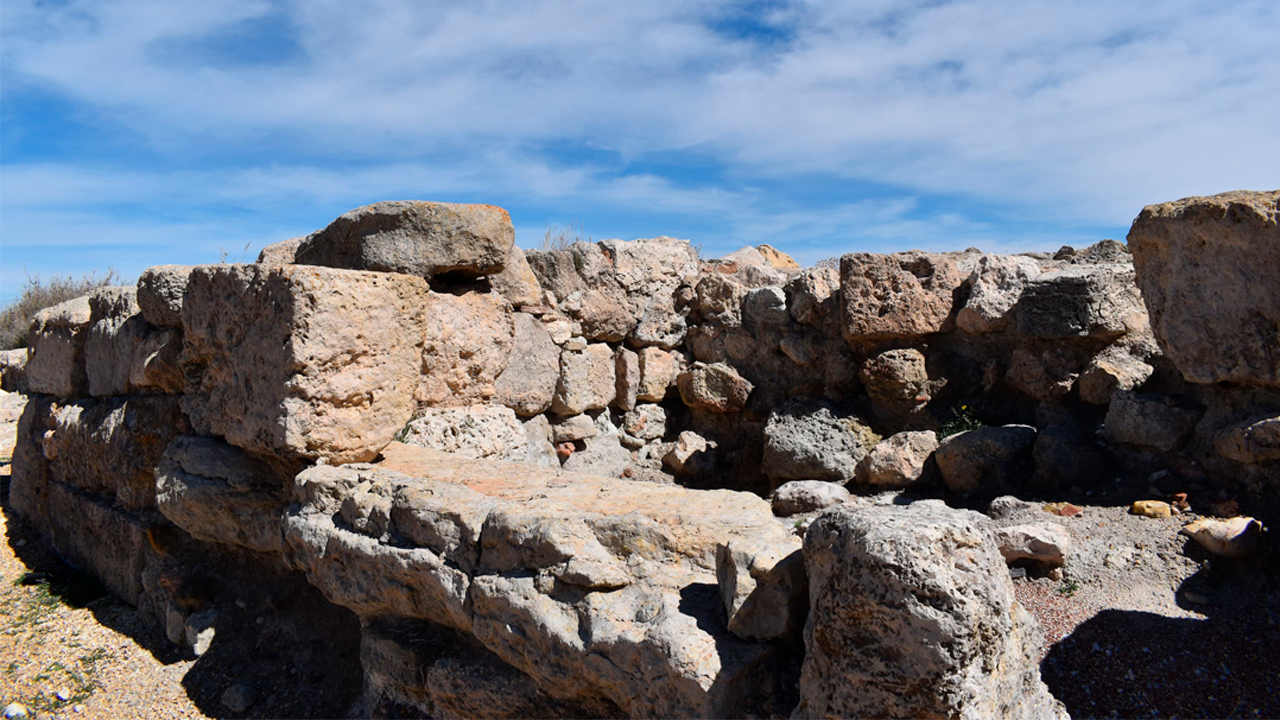
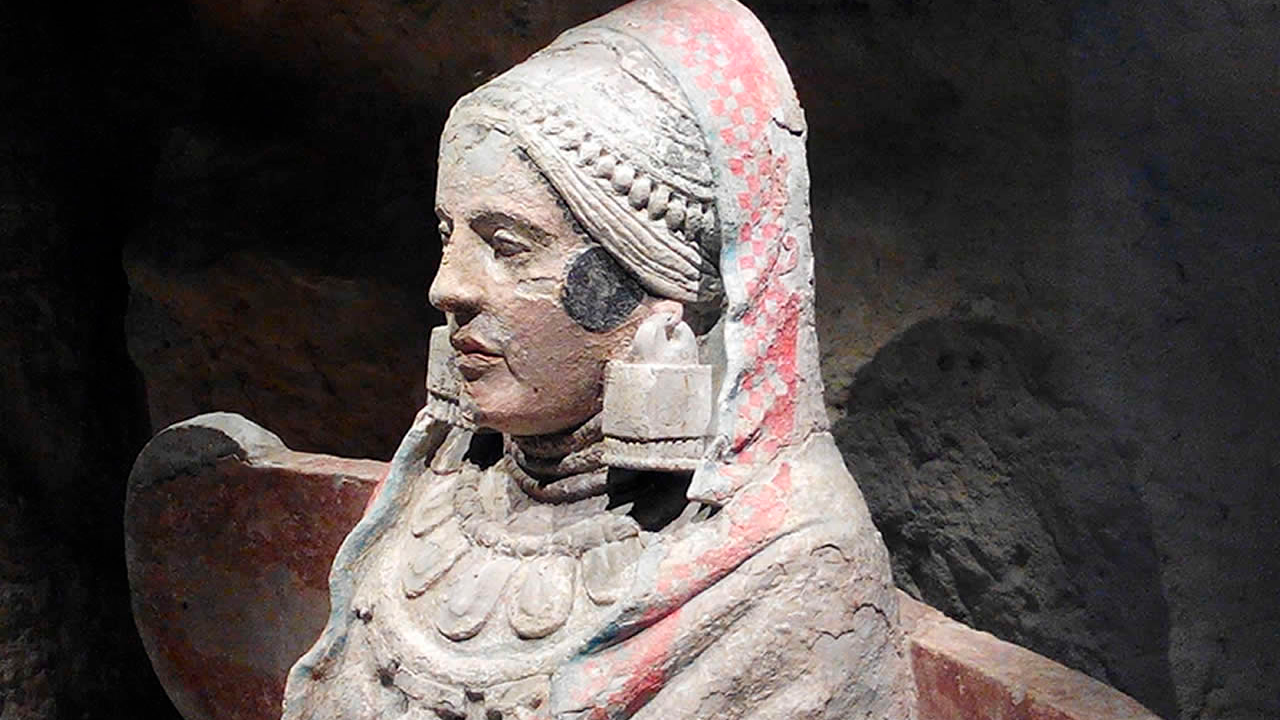
Based on Presedo’s description, he analyzed each tomb case by case to extract all the potential information regarding the structures and processed it appropriately to create a database on which to work. The idea was to set a methodological precedent so that this cataloging could be extended to other necropolises, so that the archaeological record could be contrasted in order to obtain the most accurate conclusions possible.
It has been necessary to make some corrections to the memory, as a result of the evolution that Archeology has undergone since the excavations carried out in Cerro del Santuario took place more than forty years ago, between 1968 and 1971.
The most distinctive thing about the Lady of Baza is her sitting posture on a throne richly decorated with reliefs that narrate mythological and ritual scenes. This throne not only emphasizes her status, but also intrinsically connects her to the religious realm. The interpretation of the Lady as a divine figure or priestess is supported by the ceremonial arrangement of the sculpture and its location in a necropolis, suggesting links with funerary rituals and beliefs about life after death.

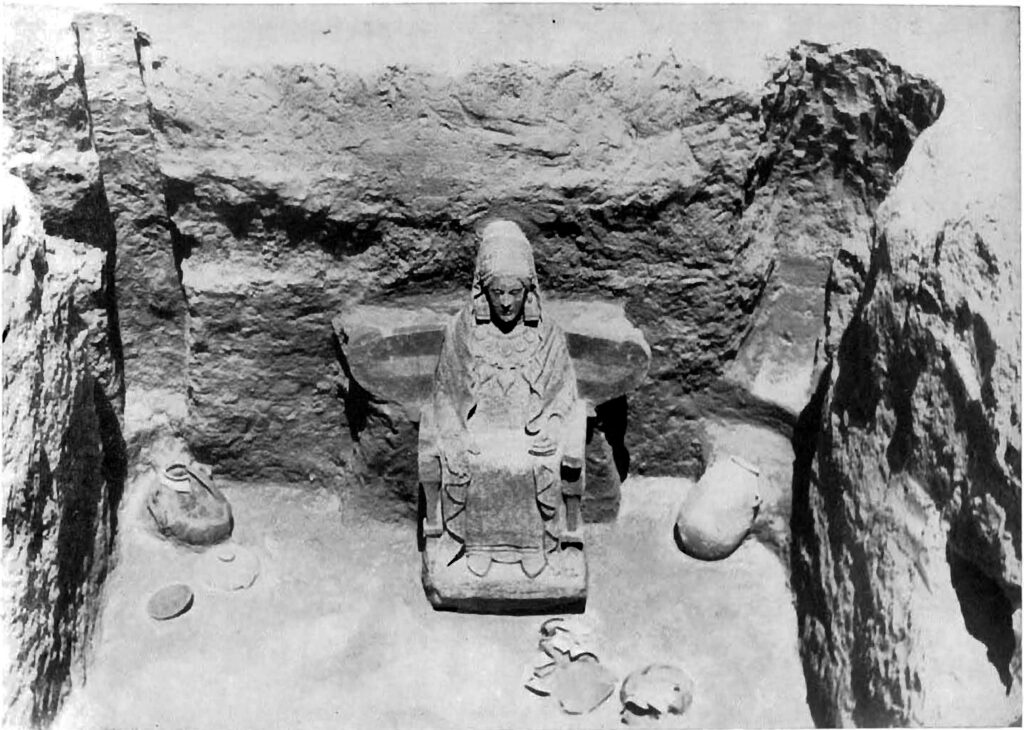
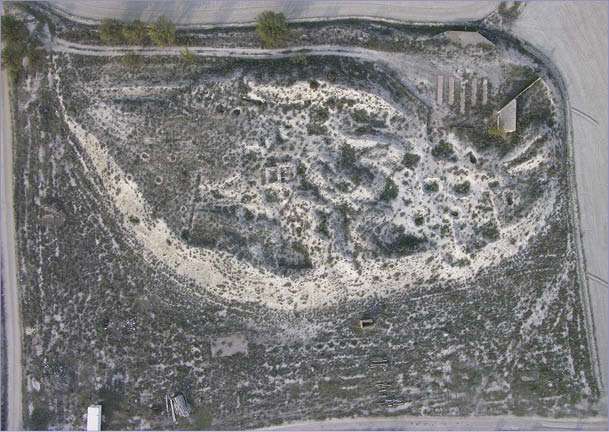
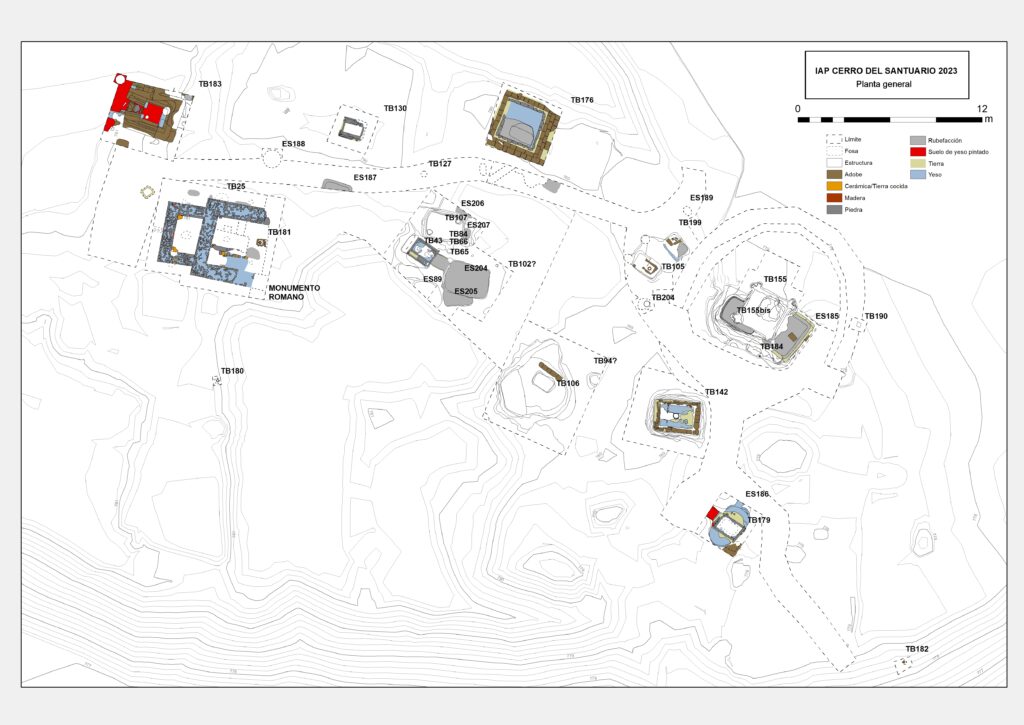

CONTEXT
The Cerro del Santuario necropolis is located in the southeast of the Iberian Peninsula, within the Granada highlands in the Hoya de Baza. It is located on a small oval-shaped hill that today has an approximate area of 0.6 hectares. and that barely exceeds 6-9 m. on the adjacent plain. The current topography is greatly transformed due to the cultivation of the surrounding lands, archaeological excavations and clearings for the construction of a shooting range and a road.
It was in operation for about a hundred years, from 400 to 300 BC. approximately. It is one of the three necropolises associated with the Basti oppidum, in Cerro Cepero. The other two are Cerro Largo, with a chronology between the 5th and 2nd centuries BC, so it coexisted with Cerro del Santuario throughout its duration; and Las Viñas, dated to the 3rd-2nd centuries BC, which would mean that it began to operate from the date on which Cerro del Santuario stopped operating.
As a consequence of this situation, a transformation occurs in the ritual with respect to Ancient Iberian. During the Full phase, a greater number of individuals access the right to burial, although not all. The funerary space is expanded, giving rise to large necropolises made up of hundreds of tombs. At the same time, a great variability of structures and funerary goods is observed, the result of the complexity of society, with intermediate levels emerging. However, the monumentality of the tomb is transferred to the interior, from the public to the private sphere. Finally, there is a change in the iconographic program, from the heroic and chivalric world it passes to the so-called Iberian “ladies”.
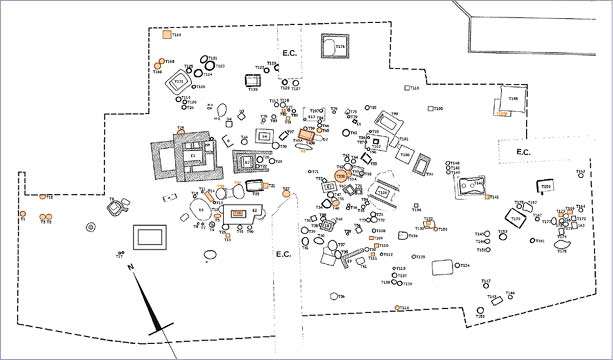
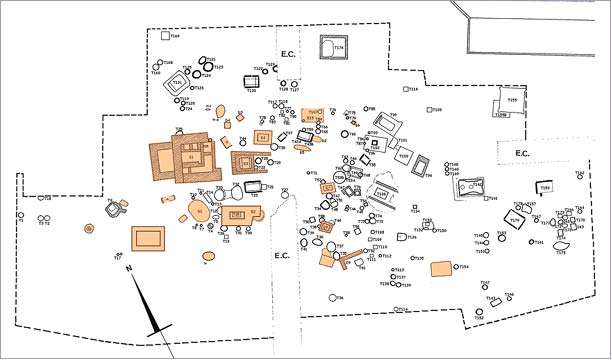
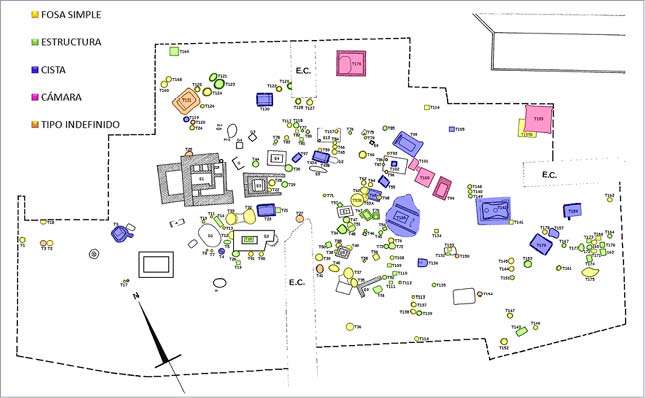
METHODOLOGY
RITUAL – Presedo uses the terms “tomb” and “burial” interchangeably, without clarifying the definition of each one. The burial is the remains of the deceased; while the tomb is the architectural enclosure that contains one or more burials plus the set of objects associated with it.
TYPE – Presedo makes a classification of the tombs, but observing the very wide variety of structures, it is seen that it is insufficient to reflect all the complexity of possibilities of the necropolis. For this reason, I created a new classification that offers different types and subtypes of tombs.
DEPTH – The morphology of the hill at the time of the excavations was altered and was not the same as in Iberian times. Some of the causes are the frequent removals carried out by plows that penetrated deeply into the earth, or the recent leveling that was carried out for the planting of almond trees, to make a road and to build a shooting range.
DISTRIBUTION OF THE NECROPOLIS – If we look at the last image with the location of the tombs according to their typology, apparently no orderly distribution can be seen, although it is true that there is a tendency for the cists to be located in the center, around the middle upper, and of the chambers in the upper right quarter; In addition, there are certain groups of tombs that are densely piled up. But since there is still a large sector of the necropolis to be excavated, any conclusion would be hasty.
